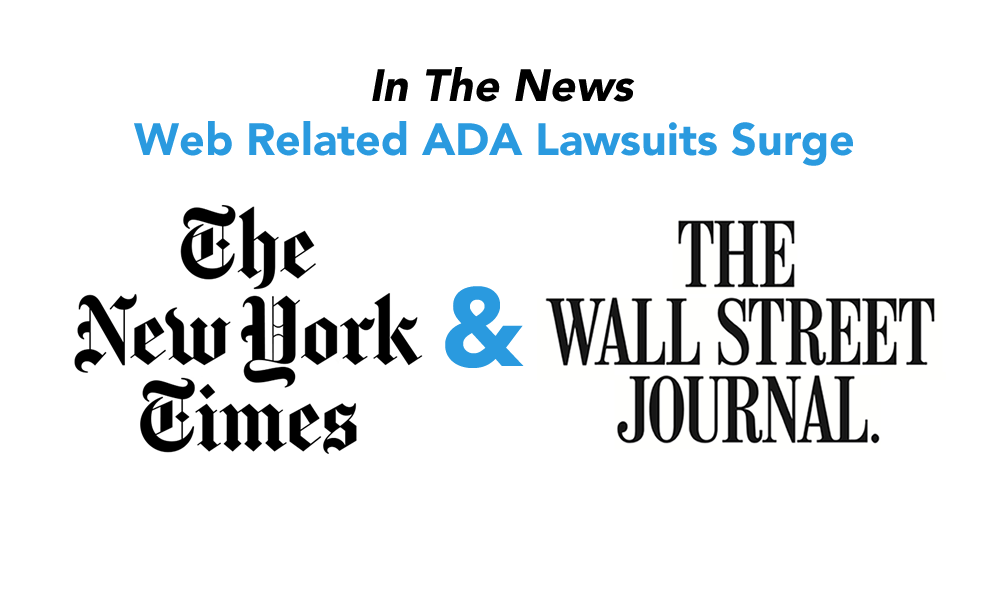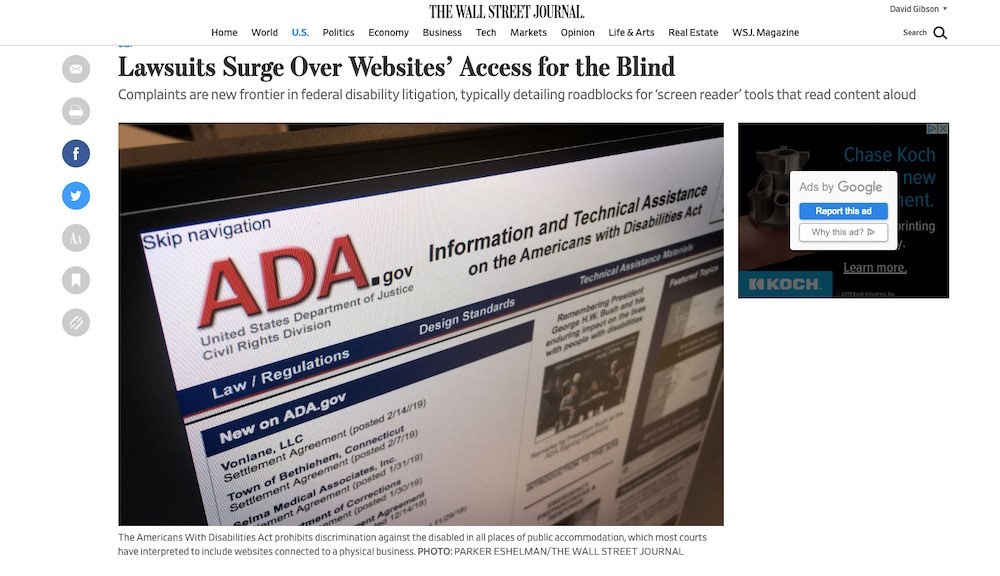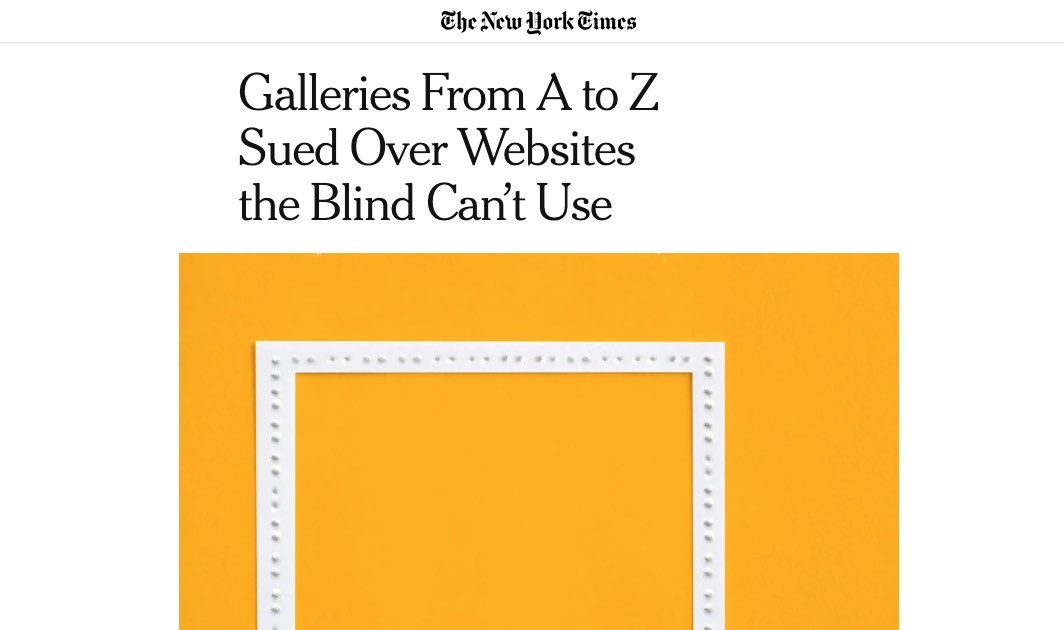
NY Times & Wall Street Journal with Back to Back Stories on Web Related ADA Lawsuit Surge
This week, both the NY Times and WSJ covered the explosion in web-related ADA cases. Both citing the recent Seyfarth Shaw report that revealed almost a 3x growth in lawsuits in 2018 over 2017. The widely noted recent 9th Circuit ruling against Dominos promises to increase these “surf-by” lawsuits.
The article does a good job of summarizing the perspectives of businesses and people with disabilities who rely on the web the same way others do, but websites that are not properly designed for accessibility therefore discriminate. However many who face such suits feel this is legal extortion.
The recent ruling in favor of the plaintiff in Robles v Dominos punctuates the clear trend in the courts that continue to support the argument that websites and web apps are "places of public accommodation" protected by the ADA. Of note in this case, is that the 9th Circuit supports the limitation that the law only applies in cases where there is a "nexus" between the website and a physical location. So at least in that district, the law only applies to brick-n-mortar.

The Wall Street Journal story Lawsuits Surge Over Websites’ Access for the Blind
The story covered the broader issues and provided good context. The first sentence sets the tone stating that “Businesses with websites that can’t be navigated by the blind are getting pummeled with lawsuits.” and points out that many are getting hit with lawsuits for the second or third time. According to analysis of cases by UsableNet, 20% website owners with lawsuits in 2018 had already been sued.

The New York Times article Galleries From A to Z Sued over Websites the Blind Can’t Use
The Times focuses on a recent methodical wave of suits hitting New York City art galleries by just one plaintiff. As one gallery owner states “It’s blackmail, that’s really what it is.”
The article highlights the importance of accessibility for people with disabilities: ““Think about your own daily life and how much you use the internet,” said Chris Danielsen, the director of public relations at National Federation of the Blind, and a blind person himself. “And then imagine almost every day you encountered something that you literally could not do.””
“Depending on one’s perspective, the suits are either salvos for civil rights or a way for lawyers to scrape the internet for a quick paycheck.”
“Their motives notwithstanding, the lawsuits expose what advocates for the blind say is a real problem: Many websites remain unusable to the visually impaired, even if those people equip their devices with software and hardware adapted for that use.”
The two articles reflect the growing impact on businesses, as well as the growing awareness about the role that the Internet plays in the lives of people with disabilities. However, neither article provides guidance for what website owners should be doing to make their websites accessible. That's where we can help.